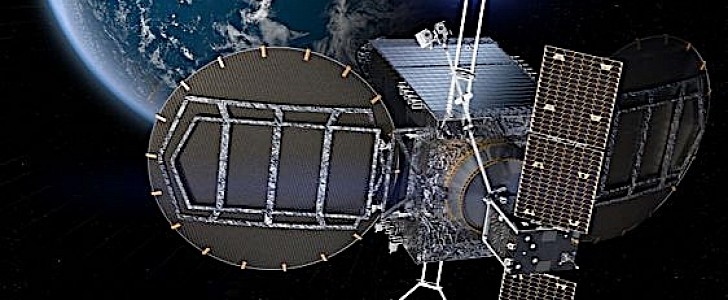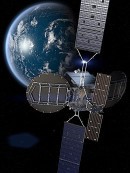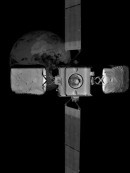For a long time, once an orbiting piece of machinery reached the end of its life (or fuel), that was it: it either ended up floating forever in the junkyard our orbit is slowly turning into or crashed and burned into the atmosphere. But things are slowly beginning to change.
For the past decade, companies have been experimenting with so-called servicing spacecraft, small machinery tasked with going up into orbit, attaching themselves to the target, repairing it, or performing whatever task is required.
In February 2020, Northrop Grumman and its subsidiary SpaceLogistics managed the first such feat, linking a small craft called MEV-1 to an Intelsat satellite. This month the two companies did it again, with the so-called MEV-2 meeting up in orbit with another Intelsat orbiter.
MEV stands for Mission Extension Vehicle. In this particular case, it is tasked with giving the communications satellite it is now attached to an extra five years of life, including by fueling it. It will then undock and head for its next assignment, according to Northrop Grumman, whatever that may be.
MEVs are just the first step in the creation of an entire fleet of servicing orbital hardware. The two companies are now working with DARPA on a robotic servicing hardware called MRV and something called MEP.
MEP translates into Mission Extension Pods, "a smaller and less expensive life extension service that only performs orbit control.” They will be sent up and installed by the MRV, helping the robotic device with ”in-orbit repair, augmentation, assembly, detailed inspection and relocation of client satellite.”
Despite the many companies now working in the aerospace industry, there are few operational systems such as Northrop Grumman's around. Others are working on similar technologies, though, opening the doors to satellites going well beyond their current capabilities.
In February 2020, Northrop Grumman and its subsidiary SpaceLogistics managed the first such feat, linking a small craft called MEV-1 to an Intelsat satellite. This month the two companies did it again, with the so-called MEV-2 meeting up in orbit with another Intelsat orbiter.
MEV stands for Mission Extension Vehicle. In this particular case, it is tasked with giving the communications satellite it is now attached to an extra five years of life, including by fueling it. It will then undock and head for its next assignment, according to Northrop Grumman, whatever that may be.
MEVs are just the first step in the creation of an entire fleet of servicing orbital hardware. The two companies are now working with DARPA on a robotic servicing hardware called MRV and something called MEP.
MEP translates into Mission Extension Pods, "a smaller and less expensive life extension service that only performs orbit control.” They will be sent up and installed by the MRV, helping the robotic device with ”in-orbit repair, augmentation, assembly, detailed inspection and relocation of client satellite.”
Despite the many companies now working in the aerospace industry, there are few operational systems such as Northrop Grumman's around. Others are working on similar technologies, though, opening the doors to satellites going well beyond their current capabilities.






